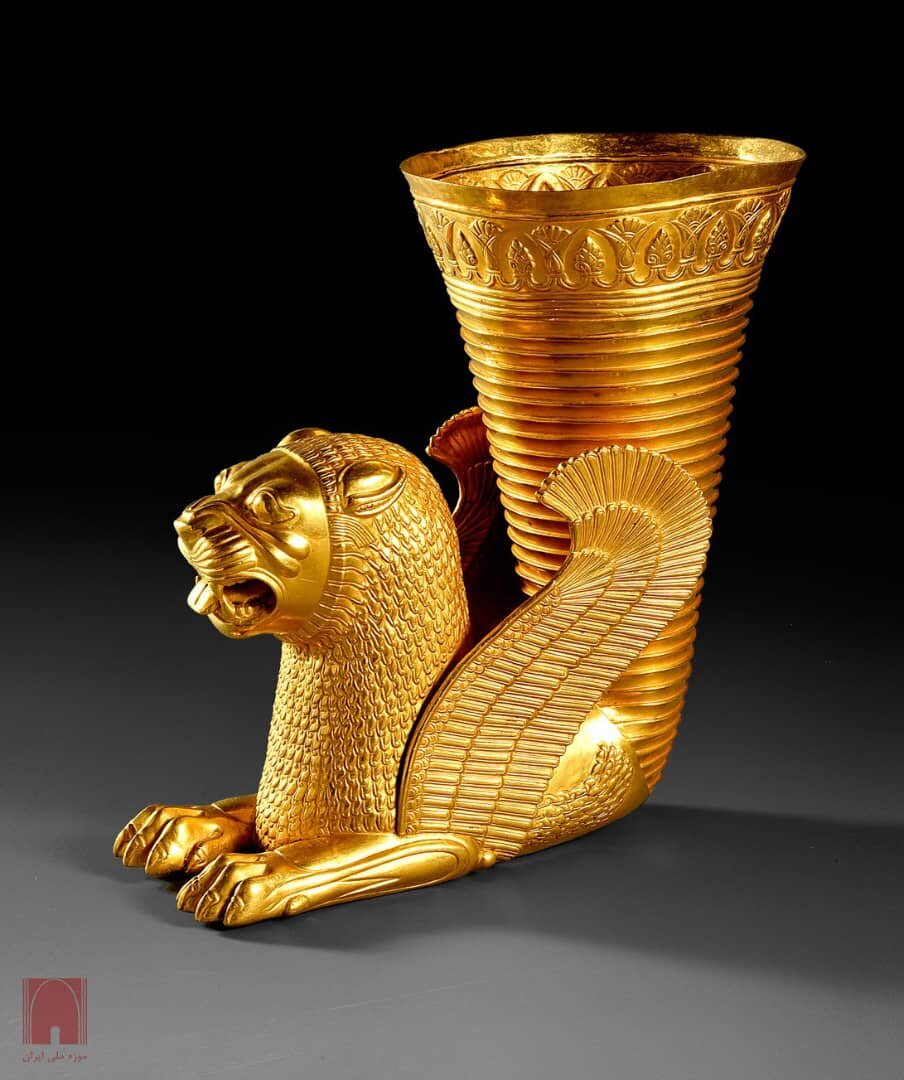Echoes of the past: gold rhyton in the form of a winged lion

TEHRAN - Drinking vessels of varied designs flourished throughout the Near East from the 1st millennium BCE well into the Islamic era.
Among these, funnel-shaped beakers adorned with animal protomes formed a particularly distinctive category, serving important ceremonial and ritual functions. These vessels represented more than mere drinking utensils - they embodied the artistic achievements and cultural values of their time.
During the height of the Achaemenid Empire, animal-shaped rhytons stood as some of the most exquisite examples of Persian metalwork. Typically crafted from precious materials like gold and silver, these objects combined practical function with profound symbolic meaning. The frequent depiction of powerful creatures - lions, bulls, and mythical griffins - not only demonstrated exceptional technical skill but also reflected the empire's far-reaching cultural connections across the ancient world. These were objects made for royalty and ritual, serving both practical and ideological purposes in Achaemenid courtly life.
The pictured rhyton, unearthed near Hamedan, dates back to the Achaemenid era and is being kept at the National Museum of Iran in downtown Tehran. It measures 22.3 cm in height, with a base diameter of 19.5 cm, a top diameter of 12.8 cm, and weighs 892 grams.
The rhyton features a funnel-shaped beaker adorned with horizontal ridges and a decorative band of 16 lotus flowers and palmettes. At its front, a winged lion is masterfully soldered to the vessel. Both the beaker and the crouching lion remain remarkably intact, with only minor losses to details between the ridges near the nose and in the beard. The lion’s mane is finely stylized, composed of rows of small hook-shaped tufts, while its body terminates in upward-curving belly hairs. A narrow triangular motif between the outstretched forelegs represents stylized skin. The hollow wings, crafted from two soldered gold plates, are attached to the forelegs; their front sections are meticulously detailed with two rows of short feathers followed by three rows of long flight feathers. The lion’s open mouth displays a separately attached protruding tongue, with the orifice concealed behind it.
This masterpiece of Achaemenid goldsmithing was undoubtedly part of a royal service. Similar metal rhytons from the period typically combine a funnel-shaped beaker with an animal protome—most often a lion or horned creature.
AM
Leave a Comment